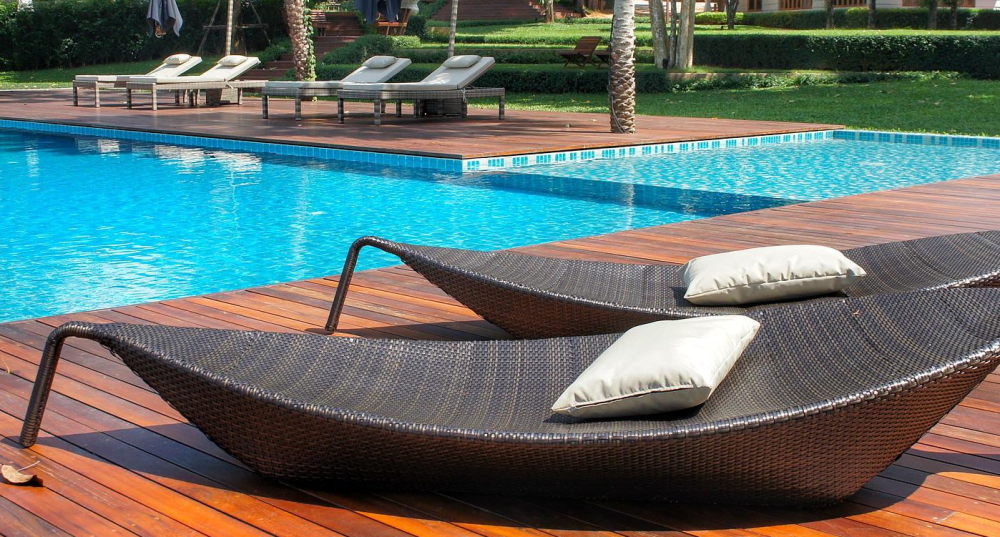The beginning of the spring season is the ideal time to begin preparing your swimming pool for the forthcoming season. Pool owners can get a head start so that the water is clean and ready to swim whenever the weather warms up.
People, who want a swimming pool frequently question, “How can I prepare my home for a pool even if I don’t want to have one now?”
We prepared this guide to assist you in preparing your home for a pool wherever you want it to be because every property is different, and not everyone wants the same pool type in the exact location.
Prepare the inground swimming pool for the incoming season
- Clean the pool walls and floor: Use a pool vacuum to remove any dirt and debris from the walls and floor of the pool.
- Check the water chemistry: Test the pH, total alkalinity, and chlorine levels to ensure the water is safe for swimming.
- Balance the water chemistry: Add the necessary chemicals to balance the pH, total alkalinity, and chlorine levels.
- Clean the filter: Clean or replace the filter cartridge, if necessary.
- Clear the skimmer baskets: Remove leaves and other debris from the skimmer baskets.
- Backwash the filter: Run the filter for several minutes to remove any debris that may have built up.
- Add a shock treatment: Shock the pool with a chlorine shock treatment to kill off any bacteria that may have built up in the water.
- Monitor the water chemistry: Check the pH, total alkalinity, and chlorine levels regularly to ensure they remain balanced.
Remove protection cover
Keeping and cleaning a pool can be time-consuming and costly, but by venturing into a pool cover, you can make things much more straightforward. These significant, tarp-like additions keep dirt and debris out of the water and filter, ensuring the pool remains clean and functional.
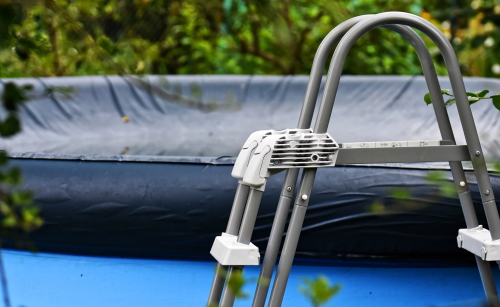
Pool covers also save you the trouble of collecting leaves out of the water with a net whenever you wish to swim. Many pool coverings also help to warm your pool and reduce water evaporation. You’ll save money and time in the long term because you won’t have to use the heater or refill the pool as frequently.
Release all the water out
Every pool owner’s worst nightmare is a green pool full of chunky bits of algae, hanging trash, and possibly even a dead animal. It appears to be hopeless. You might throw in the towel and decide that draining the pool and starting over is the best option.
You can get sick by swimming in a dirty pool in various ways. Just ask the local professional pool cleaner. Although a swim in a pool might provide relief from the summer heat, you should consider how safe it is before diving in.
There are several germs and bacteria in your swimming pool that might cause recreational water sickness (RWIs). Sucking, breathing, or coming into touch with contaminated water from pools, spas, lakes, or other bodies of water can spread these infections. Swimmer’s ear, skin rashes, and even diarrhea are typical symptoms.
Wash the walls and bottom of the pool
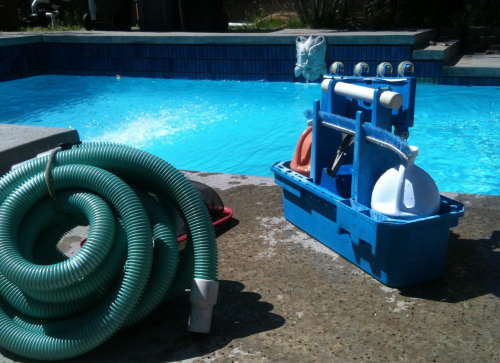
Pool walls can become soiled over time if the pool is left unused for an extended period or if maintenance routines are inconsistent. After a storm, the pool may be polluted by runoff water or foreign material that releases color, such as paint buckets, tins, and clothes with running color, among other things. When this happens, the walls are the ones that suffer the most. As a result, if you want to utilize your pool, you’ll need to clean it first.
You’ll need washcloths, pool brushes, and the correct pool surface cleaner to clean your pool walls. It’s simple to choose a brush; make sure it’s appropriate for your pool and mount it on your telescopic pole.
Your choice of cleaning is a bit difficult. You have to make sure that the cleaning solution you use will remove the same stain that is on your pool walls.
The growth of algae, grime, and other microorganisms on the sides of your pool can make it nasty and slimy, even if it’s not visible to the human eye. High-pressure washers are the ideal DIY solution for keeping your pool clean and spot-free all summer.
Fill up the pool with new water
Using city tap water and a garden hose is one of the simplest and most cost-effective ways to fill a swimming pool. All you’ll need is flowing water, a garden hose, and a water faucet outside to connect it to.
As a result, check for any water shortages or required rationing in your state before filling your swimming pool; it takes roughly 48 hours to fill an average-sized 15,000-gallon swimming pool.
Bulk water supply is another common way to fill swimming pools quickly. It is the quickest way to fill your swimming pool.
If you go this route, the most important thing is to find a trustworthy firm that treats its water appropriately. Pool water delivery has several advantages, including pumping prepared water into your pool and saving time and money over chemically balancing the water yourself. So be sure the water delivery business you choose has a strong reputation and provides high-quality, treated water.
Set up the pump and water filtration system
A swimming pool may appear simple, but maintaining clear and clean water necessitates a complex system of interdependent components. If just one of those components fails, the water quality and your comfort might quickly deteriorate, potentially causing damage to other components. The pump and filter are two essential components of any pool, whether in-ground or above-ground, for properly filtering, circulating, and treating the water.
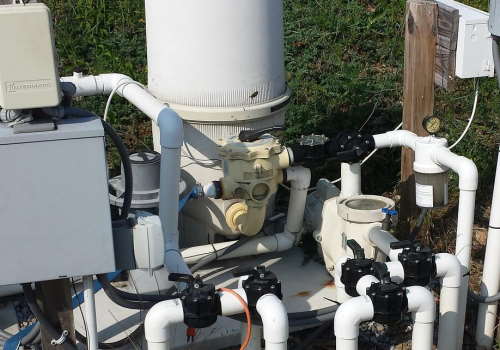
To remove debris and impurities, pool pumps push water from the pool through the filter and back into the pool. The pool pump is commonly installed adjacent to the filter in a concrete pit or recess below the pool’s water level, allowing water to flow into the pump by gravity. To eliminate significant junk, water entering the pump input first goes through a strainer basket in the pump housing. The water subsequently passes via the filter and, if one is present, the heater.
In-ground pool filters are necessary pool equipment for removing impurities and particles daily, ensuring that your pool remains clean and clear. A good pool filter not only makes pool maintenance more accessible but also ensures a healthy swimming environment by filtering out potentially hazardous bacteria.
Power on the water filtration
Pool pumps consume how much energy?
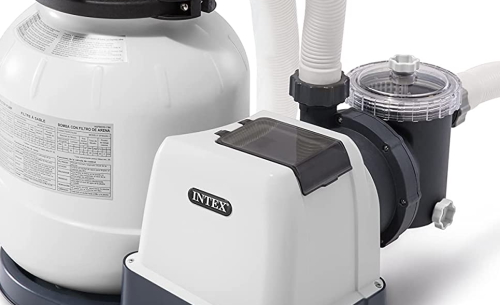
Check the specifications for the pool volume you have
- 110-120V 2,100 GPH Sand Filter Pump
- A system flow rate of 1,600 GPH
It is dependent on the size and efficiency of your pump. Pumps with more horsepower use more amperage (what you truly pay for), resulting in more Kilowatt-hours (kWh). Standard pump motors draw more amps than Energy Efficient (EE) motors. Based on how much your power company costs per kWh and how many hours per day the pump is working, which varies depending on the season, one hp (standard) UST1102 motor will cost between $1 and $5 per day. A monthly expense of $30-$150 will be the result.
Pour all the chemicals
Consumers love whining about chlorine in pools almost as much as they enjoy swimming in clear water. Chlorine-based substances can dry your skin, make your eyes red, and give off the obnoxious pool odor.
On the other hand, chlorine allows us to swim in water free of bacteria that can cause stomach problems, such as Escherichia coli. Pool operators use chemicals to adjust the pH, alkalinity, and hardness of the water, in addition to disinfectants like chlorine.
Because it dissolves slowly, has a high chlorine concentration, and is easy to apply, residential pool owners are most likely to employ trichlor or trichloro-S-triazinetrione. It’s a delicate balance to get the disinfectant concentration just right. The concentration must be high enough to ensure that there is always some disinfectant in the water. However, it must be kept low enough for swimmers to feel comfortable. A stabilizer, such as cyanuric acid, is added to prevent the hypochlorous acid from deteriorating in the sun.
Because there are so many unknown pollutants in swimming pool water, many pool owners use nonchlorine oxidizers in conjunction with chlorine to keep their pools safe. Chemical shock treatments, such as potassium monopersulfate, can be added as needed to aid in the decomposition of the organic pollutants by chlorine. To get the most outstanding results, shock your pool in the evening or at night to prevent UV rays from destroying the oxidizer.
Questions and Answers
A skimmer is a basic filtration system that removes larger objects, such as leaves, debris, and dead insects, from the swimming pool. It has a small or medium-sized opening on the side of the pool, located just under the water surface. The internal mechanism sucks in water, along with floating debris and dirt. After being filtered and cleaned, the water will be pumped back into the pool. Other than a regular built-in skimmer, there’s also an above-ground skimmer that floats and hangs on plastic arms. This type of skimmer catches floating debris that you can collect manually with a hand skimmer. For extra convenience, you may consider getting a robotic skimmer that swims around and collects debris from your pool. A robotic skimmer can be battery or solar-powered and programmed to clean up your pool at certain times of the day.
It’s very important to thoroughly clean up your swimming pool of any floating debris, before using any kind of chemical-based cleaning product, such as chlorine or algaecide. Decaying objects like leaves and dead insects will continue to release organic substances into the water. If there’s no skimmer, dry leaves may decompose and form organic sediment on your pool’s floor, making it a perfect habitat for algae and harmful microorganisms.
You can’t expect to fill a swimming pool with water and neglect routine maintenance. Soon, the water in your swimming pool will become stagnant and unhygienic. The water will start to change color and underwater surfaces become slippery, due to bacterial and algae growth. You need chemicals to sanitize your pool and balance its pH and mineral levels.
Chlorine: Chlorine is the most affordable and popular chemical product to sanitize your pool’s water. It’s a strong oxidizer that destroys molecules of contaminants or organic matter from the inside out. Free chlorines reach organic molecules and form chloramines, which produce a distinctive scent.
Shock: The purpose of shocking your pool’s water is to unbind or oxidize chloramines (inactive chlorine by-products). Shock is simply highly concentrated chlorine that you should use after heavy rain or using your pool constantly. Shock neutralizes the by-products of sanitizers and kills off microorganisms. It is sold separately to regular chlorine.
Bromine: Bromine is an alternative element that works like chlorine and it works better for warm water with higher pH. However, Bromine is less stable when exposed to UV light. When you add bromine to pool water, it won’t produce a harsh odor and won’t cause eye irritation.
Cyanuric acid: Cyanuric acid is a stabilizer that protects free chlorine from UV exposure. Unless your indoor pool is exposed to sunlight at certain times of the day, you don’t need to add cyanuric acid. Maintain about 70ppm of cyanuric acid in chlorinated pool water, if UV exposure is constant during the day.
Algaecide: In some cases, chlorine and shock are not enough to inhibit algae growth, especially in a humid, warm climate. Certain algae species grow very quickly and are hard to get rid of. Uncontrolled algae growth will make the water looks cloudy and it may potentially harm your health.
Flocculent: Flocculent clumps microorganisms together, so they will sink to the pool’s floor, which can be removed more easily later. Improper use of flocculent may leave fine dust, so you may leave this task to a professional pool cleaner.
The perfect temperature for your swimming pool should be between 78 and 82 F degrees. Any warmer, you will feel like you are having a bath or you will come out of the swimming pool shivering if the water is any cooler. This range of temperature is comfortable for the elderly and children because they usually can’t handle cold or very warm water. If the sun regularly shines brightly in your area, you may invest in a retractable enclosure with a reflective roof to block sunlight more effectively. During colder days, a water heater with a temperature sensor can automatically keep your pool warm, while keeping energy utilization manageable.
Conclusion
As you’ve seen, getting your pool ready for the summer season isn’t as tough as it would appear. Follow the following pool maintenance advice stated above, and you and your family will be able to experience the pool throughout the summer.
Preparing an inground swimming pool for the incoming season is an important step to ensure the water is safe and the pool is ready for use. By following these steps, you can ensure your pool is ready for the summer season.
